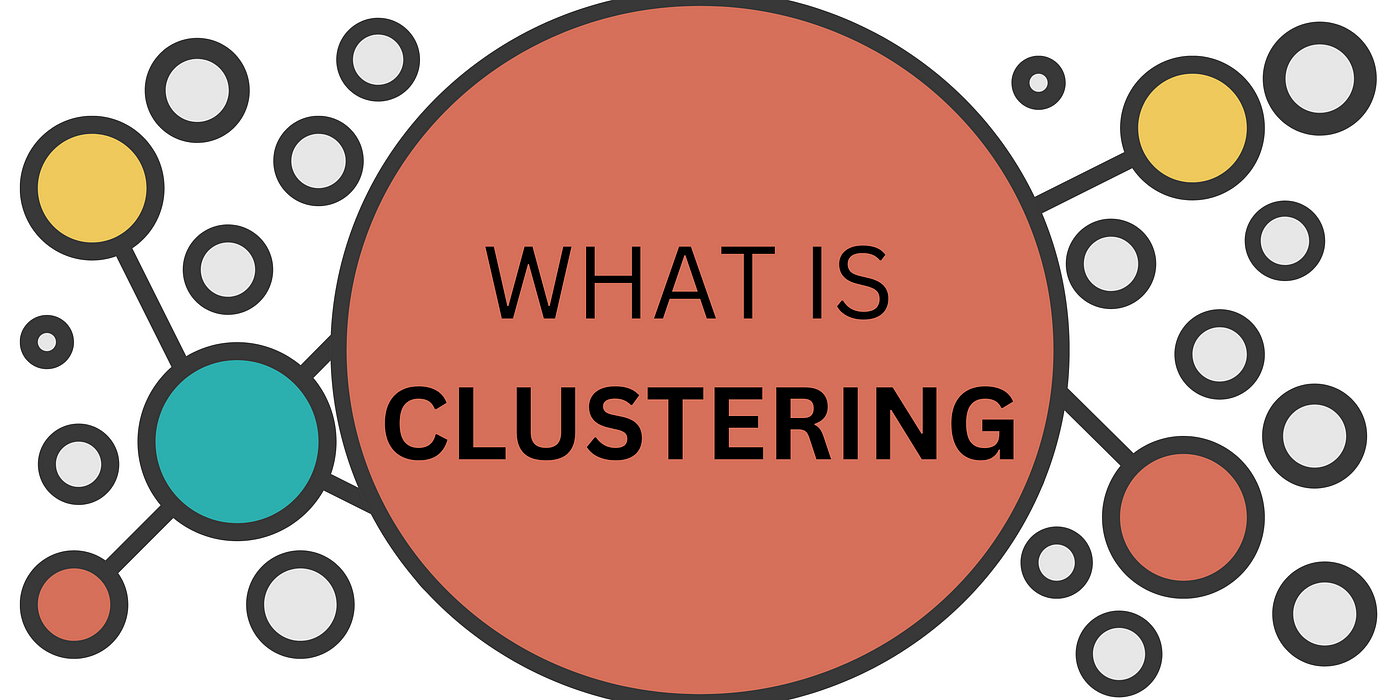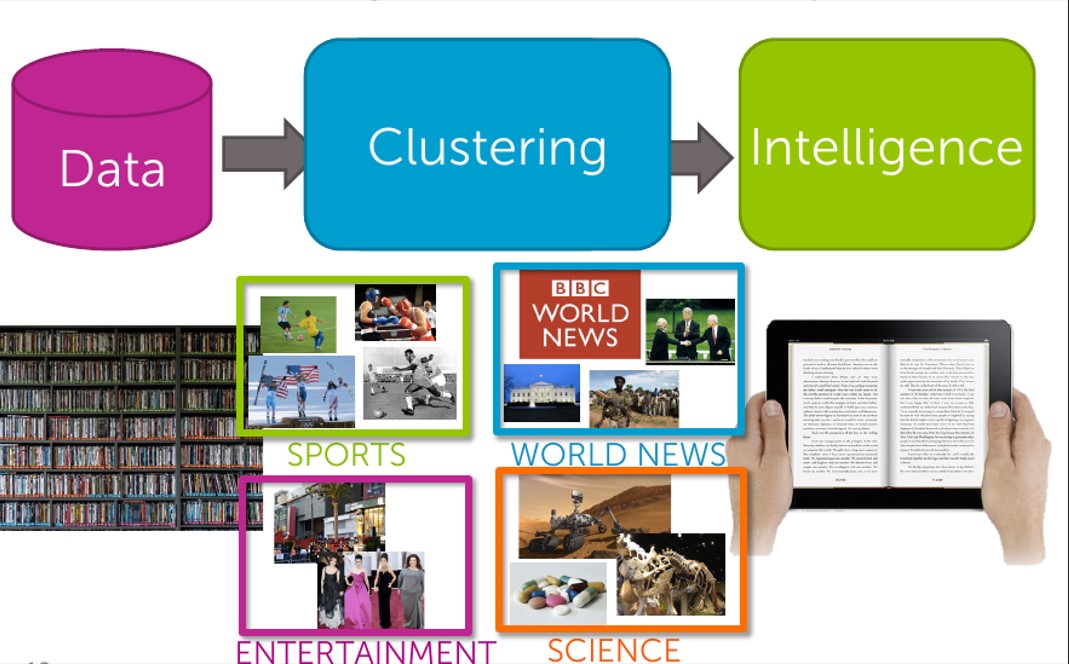What are Clustering Algorithms used for?
Are you ready to dive into the fascinating world of clustering algorithms? Imagine unraveling intricate patterns from a sea of data, like uncovering hidden gems in a treasure hunt. Clustering algorithms are the compass that guides us through this maze, helping us make sense of complex information and discover meaningful insights. Get ready to embark on a journey where data meets organization, and patterns emerge like constellations in the night sky. Let’s navigate the realm of clustering algorithms together!

Different Types of Clustering Algorithms
Clustering algorithms come in various types, each with its own unique approach to grouping data points. One commonly used type is K-Means, which partitions data into clusters based on similarity. Hierarchical clustering builds a tree of clusters to represent the relationships between data points at different levels of granularity.
Density-based clustering, like DBSCAN, identifies clusters by exploring regions of high density separated by areas of low density. On the other hand, Gaussian Mixture Models assume that data points are generated from a mixture of several Gaussian distributions.
Spectral clustering techniques use the eigenvalues and eigenvectors of a similarity matrix to partition data into clusters. Affinity Propagation does not require specifying the number of clusters beforehand; instead, it lets data points vote on their preferred exemplars.
Understanding the differences between these types can help in selecting the most suitable algorithm for your specific dataset and problem domain.
How Clustering Algorithms Work
Clustering algorithms work by grouping data points based on similarities and differences. These algorithms aim to find patterns within the data that allow for meaningful segmentation. They analyze the features of each data point and assign them to clusters or groups that share common characteristics.
One common approach is the K-Means algorithm, which iteratively assigns data points to clusters based on their proximity to cluster centroids. The algorithm continues this process until it converges on stable cluster assignments.
Another method, hierarchical clustering, builds a tree-like structure of clusters by merging or splitting them based on similarity metrics. This creates a hierarchy of clusters that can be visualized in a dendrogram.
Density-based clustering algorithms like DBSCAN identify dense regions in the data space as clusters while labeling low-density areas as noise points. By understanding how these algorithms function, analysts can uncover valuable insights from complex datasets efficiently and effectively.
Advantages and Limitations of Clustering Algorithms
Clustering algorithms offer a range of advantages in various fields. One key advantage is their ability to uncover hidden patterns within data, allowing for more insightful decision-making processes. These algorithms can efficiently group large datasets into meaningful clusters, aiding in data analysis and visualization.
Moreover, clustering algorithms are valuable tools for exploratory data analysis, helping researchers identify trends and relationships that may not be immediately apparent. They also play a crucial role in customer segmentation strategies by categorizing customers based on common characteristics or behaviors.
However, it’s important to acknowledge the limitations of clustering algorithms. One major challenge is the need for careful parameter selection and interpretation of results. Additionally, some algorithms may struggle with high-dimensional data or non-linear relationships among variables.
Despite these limitations, the advantages of clustering algorithms make them indispensable tools for businesses seeking to extract valuable insights from complex datasets.
Applications of Clustering in Real-World Scenarios
Clustering algorithms play a vital role in various real-world scenarios across different industries. In marketing, companies utilize clustering to segment customers based on their preferences and behaviors, allowing for targeted marketing campaigns. Healthcare professionals leverage clustering to classify patient data into distinct groups for personalized treatment plans.
In the field of retail, businesses use clustering to identify patterns in purchasing behavior and optimize product placement strategies. Social media platforms employ clustering techniques to recommend content tailored to users’ interests and demographics.
Furthermore, in image processing, clustering algorithms assist in grouping similar pixels together for tasks like image compression or facial recognition technology. Transportation companies utilize clustering to analyze traffic flow patterns and improve route planning efficiency.
The applications of clustering algorithms are diverse and impactful across multiple industries, driving better decision-making processes and enhancing user experiences.

Case Study: Customer Segmentation Using K-Means Algorithm
In a recent case study on customer segmentation, the K-Means algorithm was employed to analyze a large dataset of customer behavior. By categorizing customers based on similarities in purchasing habits and demographics, valuable insights were uncovered.
The K-Means algorithm efficiently clustered customers into distinct groups, allowing businesses to tailor marketing strategies accordingly. This approach enabled personalized recommendations and targeted promotions, leading to improved customer engagement and satisfaction.
Through this analysis, companies gained a deeper understanding of their customer base, identifying high-value segments for focused marketing efforts. The K-Means algorithm facilitated the identification of trends and patterns that would have otherwise remained hidden within the data.
The utilization of the K-Means algorithm in customer segmentation proved to be instrumental in enhancing business strategies and driving growth.
Tips for Choosing the Right Clustering Algorithm
When it comes to choosing the right clustering algorithm for your data analysis needs, there are a few key tips to keep in mind.
Consider the nature of your dataset – is it numerical, categorical, or mixed? This will help you determine which clustering algorithm is most suitable for your specific data type.
Think about the scalability of the algorithm. Will it be able to handle large datasets efficiently? Make sure to choose an algorithm that can scale effectively as your data grows.
Additionally, consider the shape and density of your data points. Some algorithms work better with spherical clusters, while others are more suited for irregular shapes.
Furthermore, take into account the interpretability of the results. Depending on your goals, you may prefer an algorithm that produces easily understandable cluster assignments.
Don’t forget about computational complexity and runtime efficiency. Choose an algorithm that strikes a balance between accuracy and speed based on your project requirements.
Conclusion
In the realm of data analysis, clustering algorithms play a pivotal role in uncovering patterns and insights from complex datasets. By understanding the different types of clustering algorithms, how they work, their advantages and limitations, as well as real-world applications like customer segmentation; we can harness their power to make informed decisions.
Choosing the right clustering algorithm depends on various factors such as the nature of the data and the specific goals of analysis. By following tips like understanding algorithm requirements and considering scalability and interpretability, you can navigate through the myriad options available.
As businesses continue to leverage data-driven strategies for growth and innovation, mastering clustering algorithms will be a valuable skillset. With advancements in technology and an increasing volume of data being generated daily, honing your expertise in this area can provide a competitive edge.
So dive into the world of clustering algorithms with curiosity and enthusiasm – unlock hidden patterns, reveal meaningful relationships, and pave the way for actionable insights that drive success in today’s dynamic landscape.